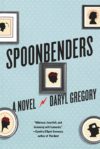Kathleen Heil is a dancer, writer, and translator of poetry and prose. Her website is kathleenheil.net. “Bird in the Hand” was originally published in the Green Mountain Review and explores the interconnected lives of characters living in Bilbao, Spain.
Where did the story come from?
When Ms. Heil began thinking about this story, she had recently visited Bilbao, Spain, where she saw some people in the plaza and began to wonder about their lives might be like. This was at the height of Spain’s unemployment and economic crisis, a reality that is reflected in “A Bird in the Hand.” Strains of philosophic thought also feature heavily in this story; as she wrote, Ms. Heil was contemplating the essay “Moral Luck” by Brian Williams, which posits that someone’s ethical choices directly correlate to their level of personal fortune.
Being a translator…
Ms. Heil’s work with different languages has affected her fiction: when she writes dialogue for her characters, she takes into account different slang, dialect, and conversational tics that define regionalist and nationalist understandings of language. “Probably it affects my work the most when thinking about rhythm and timing.”
…and a writer…
When asked about her writing process, Ms. Heil can only really describe it as mysterious. “If you can be a conduit for something, that’s when you maybe feel most in the state of grace or creation or flow.” She references Flannery O’Connor, who wrote the book Mystery and Manners: Occasional Prose and approached her characters with “ungentle curiousity,” as an important point of literary reference. She believes that she may be working through something in her writing that she would like to expand into her daily life, something that she believes draws both readers and writers to creative fiction: the ability to maintain “humility and curiosity toward interior life, and [understanding] that exterior markers of otherness don’t necessarily give us the knowledge we think they do about someone’s reality.”
…and a dancer?
Being a dancer, a writer, and a translator can make Ms. Heil feel strangely segmented, she explains. She often thinks of her “writing mind and dancing body” as different elements she needs to integrate. Even as they collide, however, her different artistic interests inform one another, drawing attention to artistic elements like space, pacing, and syncopation and enriching her artistic output.



